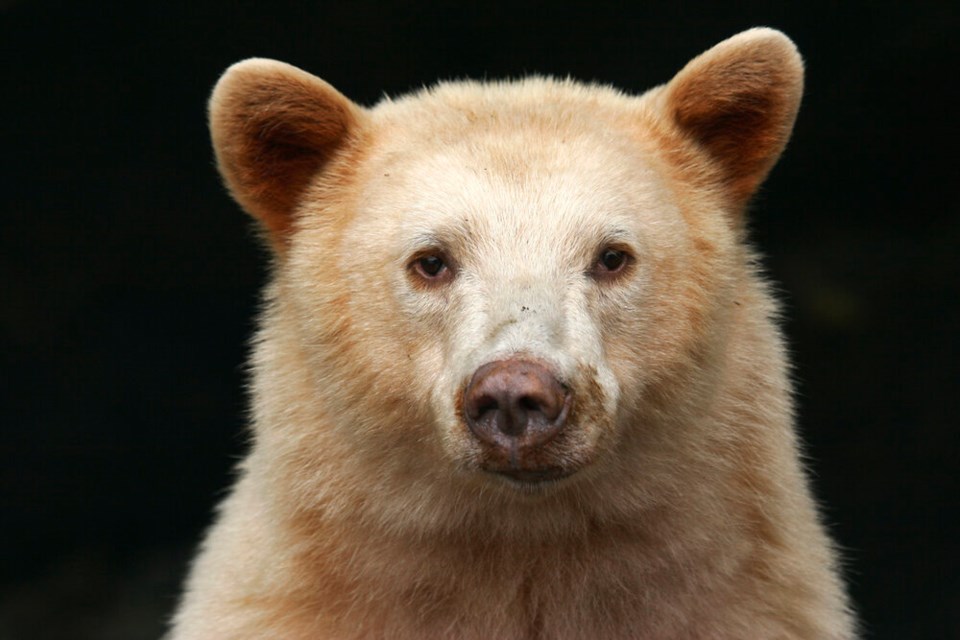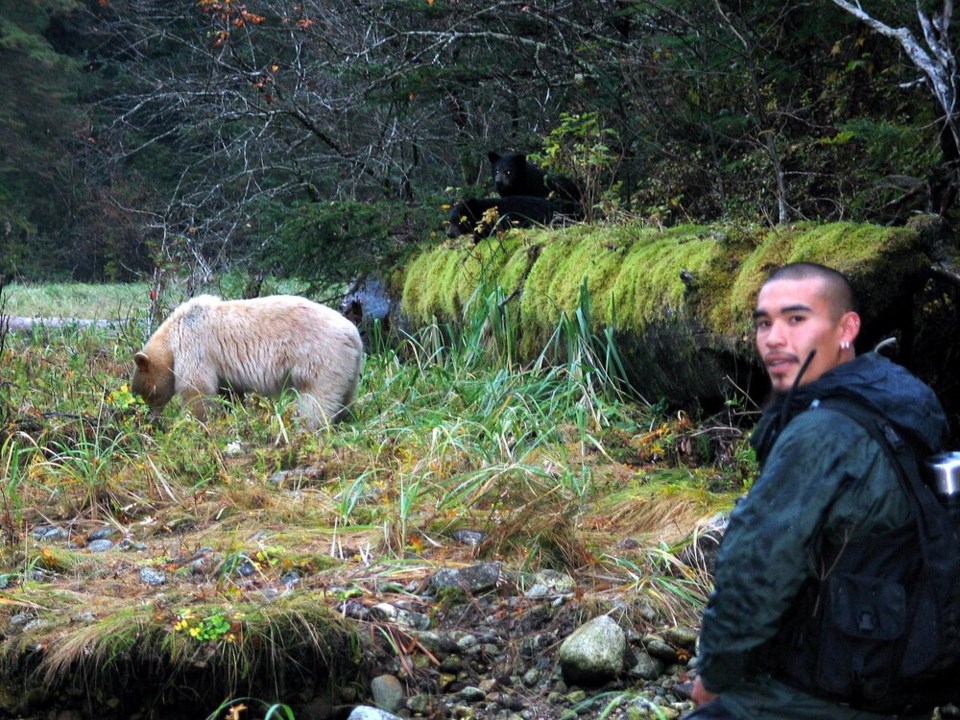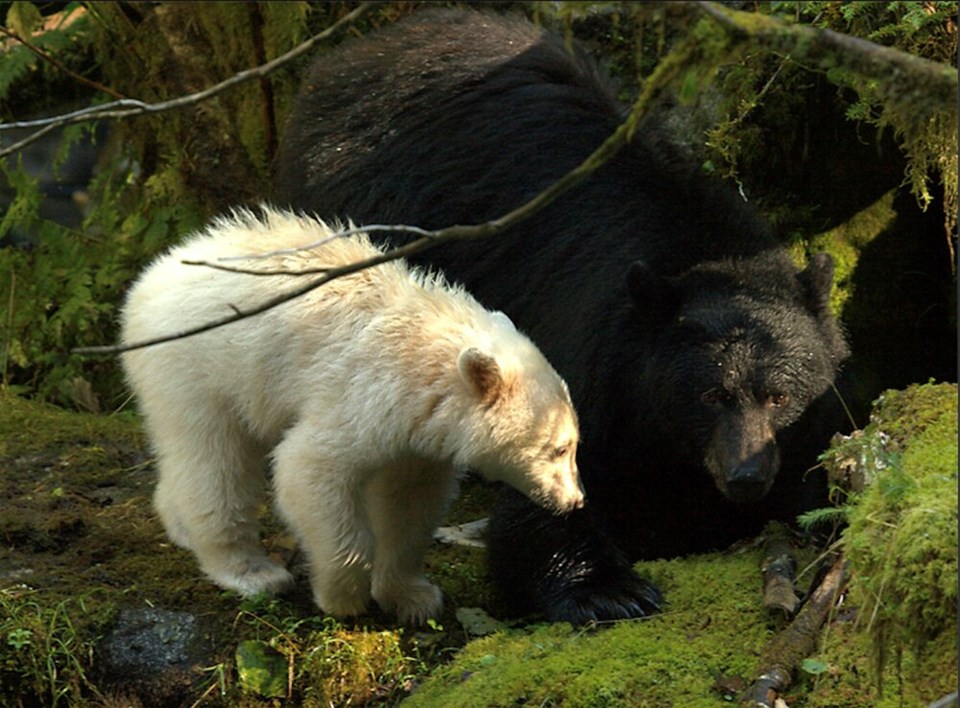The B.C. government has banned the hunting of black bears in two First Nations territories in a move that formalizes protection for one of the rarest ursine subspecies in the world — the spirit bear.
The announcement, includes hunting closures in 8,158 square kilometres of the territories of the Kitasoo/Xai'xais and Gitga'at First Nations, between Prince Rupert and Bella Coola. The closure, which covers 13 per cent of the Great Bear Rainforest, includes Gribbell, Princess Royal, and Roderick islands, where most of the black bears carry the rare gene that turns their coat white.
“It's going to be massive,” said Kitasoo/Xai'xais chief councillor Doug Neasloss. “They’re just super important culturally and something that we want to make sure that our voices are heard on.
“Hopefully this sets a new precedent for other people.”
A spokesperson for B.C.’s Ministry of Forests said the closure is a “permanent regulation.”
“Wildlife Act regulations are reviewed every two years as part of normal business, but at this time there are no plans to reopen the area,” wrote the spokesperson in an email.
Both Kitasoo/Xai'xais culture and its creation story are profoundly interwoven with the spirit bear. That story starts with raven, who forged the world and brought upon the last ice age.
"As the ice started to melt, he wanted something to remind him of the ice age, so the raven turned every tenth black bear white and set them in this part of the world," said Neasloss.
The ban has been a long time coming.

Over the past several decades, Neasloss has been part of a concerted push to buy hunting tenures in their territory and convert them into wildlife refuges. Killing spirit bears is already prohibited but that didn't prevent the killing of the territory's black bears, who hold the recessive gene that makes the animal's white coat possible.
The Kitasoo/Xai'xais in their territory in 2012 and the province followed with a provincial ban on the grizzly bear hunt in 2016.
Most British Columbians appear to agree with a pivot away from trophy hunting. One 2015 survey found 91 per cent of B.C. residents opposed hunting animals for sport; another in 2017 found four in five Canadians supported an outright ban on trophy hunting.
Now, instead of long-barrel rifles, visitors to Kitasoo/Xai'xais territory bring long-barrelled camera lenses in a conservation model that has formed the backbone of a sustainable ecotourism industry.
But just how many spirit bears were out there has never been certain, with estimates ranging as high as 500 animals.
And so, in their push for a hunting ban, the Kitasoo/Xai'xais and Gitga'at have partnered over the last eight years to measure the true range and prevalence of spirit bears — also known as the Kermode or Moksgmʼol in the Gitga’at language.
“We’ve been dedicating a lot of time and effort to the research and trying to advocate for the end of the bear hunt,” said Neasloss. “We set up hundreds of research stations.”
Christina Service, a wildlife biologist with the Kitasoo Xai’xais Stewardship Authority, says pinning down the range and hot spots of the spirit bear meant setting out in the spring from the villages of Hartley Bay and Klemtu.
At that time, the bears are molting, so Service and her team would leave “this really disgusting fish sludge” to get the bears interested. When they approached the bait, the bears would have to cross over barbed wire, which would snag some of their loose fur.
The black bear data set that emerged amounts to the largest ever collected on B.C.'s coast, said Service.
In 2020, years into the work, Service published concluding the gene that gives rise to the spirit bear’s unusual white fur was 50 per cent rarer than previously thought.
“Because we found they’re 50 per cent lower, it suggests that spirit bear population size is much lower than previously thought,” said Service.
Service says she's looking to publish a final population estimate roughly a year from now. Whatever the final tally, it's clear the spirit bears prevalence among black bears is strikingly similar to First Nations' stories going back thousands of years.
“We found about one in 10 bears are white, which is funny, that's exactly what our story says,” said Neasloss, who spent years as a bear guide.

Brian Falconer, a wildlife guide and leading force behind buying back hunting tenures, says the ban marks the end of a long fight to protect bears from foreign and domestic hunters in the First Nations territories.
“There’s so little of this that’s justified. The vast majority of black bears are killed for a mount,” said Falconer.
Buying back the hunting licence tenures effectively banned foreigners who would have accessed bears on a guided trip. The latest provincial ban means resident hunters will also be barred from killing bears. Falconer added it would not have been possible without support from the province's guide outfitters.
“We're super excited. It's finally over,” added Neasloss. “This is probably the only place in the province now where you get black bears, spirit bears and grizzly bears all protected.”
At the same time, Falconer says the ban does little to protect animals in the rest of the Great Bear Rainforest, which altogether covers an area about the size of Ireland.
“It doesn’t change anything for the Southern Great Bear,” said Falconer. “It’s not just black bears. It’s every species of carnivore… There are very few places in the world where those top predators aren’t hunted.
“It’s not the end of the story," he said.
Working with Raincoast Conservation Foundation, Falconer says he has raised over $600,000 of the roughly $1.9 million required to purchase a sixth hunting licence tenure more than 400 kilometres down the coast at the southern end of the Great Bear Rainforest.
Partnering with the Homalco First Nation, if successful, the buyback would ostensibly protect wildlife in a territory the size of Costa Rica.
That could mean a boost to local Indigenous economies, which are increasingly relying on tourism.
“Many people that come here come here to see these bears, partly because they've lost all nature,” said Neasloss. “I hope that this is an example for other communities, other nations.”
However, when reached for comment, a Ministry of Forests spokesperson told Glacier Media there are no plans to extend a ban on black bear hunting to any other parts of the province.
“Black bears have high abundance through the province. This closure was specific to the higher recurrence of the genetic variability of Spirit bears in the specific area closed,” said the spokesperson.



